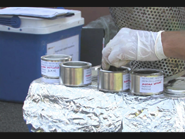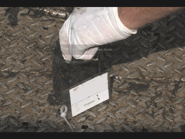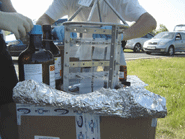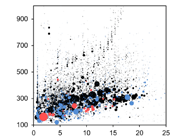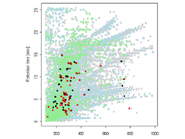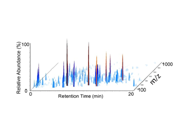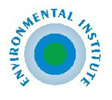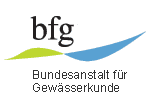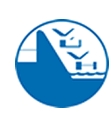You are here
Workshop on 3Ms in DW - Conclusions
Short report of the NORMAN workshop co-organised by KWR and IWW on micropollutants, metabolites and mixtures in (the sources of) drinking water, (Nieuwegein - NL, 18-19 June 2012)
2 July 2012
The workshop consisted of two days. On the first day, six international speakers thoroughly set the scene by providing technical presentations in the field of:
(i) occurrence and human significance of (novel) disinfection byproducts (DBPs) (Susan Richardson),
(ii) the toxicological assessment of chemical compounds (Tamara Grummt),
(iii) regulatory status of (pesticide) metabolites ( Arnaud Boivin ),
(iv) cumulative risk assessment of chemical compounds in food (Bernadette Ossendorp),
(v) mixture toxicity interaction of chemical compounds ( Thomas Backhaus ) and
(vi) novel strategies for future risk assessment of compounds in (the sources of) drinking water ( Ron van der Oost ).
Susan Richardson showed in her presentation that only a small section of the halogenated DBPs is known (~30%) and that thereof only a fraction is under regulation (11 compounds in total). In addition, laboratory animal experiments showed that there is a general mismatch between regulated (halogenated) compounds and toxicologically relevant compounds. Bioassays are presented as useful screening tools to assess the risks of the increasing amount of chemical compounds. In the following presentation, Tamara Grummt (UBA) discussed the need for novel toxicological concepts. An example is the application of threshold based trigger-values such as the Threshold of Toxicological Concern (TTC).
Tamara supported the opinion of Susan Richardson that simple and robust bioassays can be a very useful addition to chemical screening methods of drinking water and its sources. Finally, Tamara suggested implementing the concept of toxicological safety, rather than toxicological risk. The fact that there is an increasing amount of compounds in the environment is also recognised by regulators.
Arnaud Boivin (ANSES) discussed the various regulations that are available for compounds (with an emphasis on pesticides) and showed that the data requirements vary, which can lead to different conclusions. In addition, Arnaud showed that, at present, the cumulative effects of compounds are not assessed, but there is general agreement to work on this. Finally, the role of metabolites was briefly discussed and Arnaud mentioned that these compounds are not always integrated but - at least for active substances - they really need to be.
In the next presentation, Bernadette Ossendorp (RIVM) demonstrated the latest efforts of the European Food Safety Authority (EFSA) with regard to cumulative risk assessment of food-borne compounds. The pragmatic approach that is now adopted for pesticides relies on the concept of dose addition (being the most relevant). According to this concept, so-called Cumulative Assessment Groups (CAGs) are built, which contain compounds with the same mode of action. The downside of implementing this concept in regulation is the high workload that is associated with it. Finally, Bernadette proposed to use a simple model which also takes into account metabolites.
Next, Thomas Backhaus (University of Gothenburg) demonstrated that mixtures do matter and that Concentration Addition (CA) is the most pragmatic concept for risk assessment. The latter concept assumes that compounds do not interact with each other and does not take mechanisms such as synergism into account. An alternative is the concept of Independent Action (IA), but the disadvantage is that it is very data demanding. To overcome limitations associated with CA (compound concentrations required) and IA (compound mode of action required), the TTC has been proposed. It is a nice tool for bridging data gaps and can be a decision point for further investigation. However, it has its own intrinsic problems (see further in this short summary).
In the final presentation, Ron van der Oost (Waternet) showed a novel risk assessment framework in which bioassays play a pivotal role. As mentioned by other speakers, the downside of bioassays, however, is that compound identity remains unknown. This is where Effect Directed Analysis (EDA) can come into play. For future risk assessment a combination of toxicological assessment and chemical assessment will be required. For bioassays it will become increasingly important to derive thresholds below which risks for human health are negligible.
On the second day, the participants discussed the most relevant topics related to micropollutants, metabolites and mixtures in (the sources of) drinking water. Following this discussion three topics were prioritised for further follow-up discussion in three breakout groups, namely (i) bioassays, (ii) the Threshold of Toxicological Concern (TTC) and (iii) Effect Directed Analysis (EDA)/prioritisation of compounds.
In the first breakout group (chaired by Tamara Grummt and Susan Richardson) a discussion was held on bioassays and which models to apply. In general, consensus was reached that a panel of (cost-effective) bioassays for general toxicity (e.g. cytotoxicity) and more specific toxicity (e.g. genotoxicity, reprotoxicity, neurotoxicity, immunotoxicity and hormone disruption) would provide the best option. In addition, specifically for drinking water it is best to apply cell lines with a human origin. Bioassays can be used as a tool to screen for biological activity of the vast amount of compounds in the environment, but standardisation of end-points is important in addition to proper bioassay validation. Finally, it was concluded that bioassays trigger-values are important to put results into perspective.
In the second breakout group (chaired by Thomas Backhaus and Merijn Schriks ), the role of the TTC in the framework of risk assessment was discussed. The pros for applying the TTC include that it is quick, simple and can be easily used for prioritisation. In addition, it is already implemented in German and Dutch legislation. However, the TTC may be over-conservative and can overlook unknown (hazardous) compound properties. Furthermore, it is based on a static database, whereas the presence of compounds in the environment is a dynamic process. In addition, compound identity is required and mixture toxicity effects are not completely incorporated. However, it was concluded that the TTC can be a part of a tiered approach in risk assessment. An interesting final question is what to do when the TTC is exceeded. Among the options is carrying out additional research and/or reducing compound concentrations by e.g. emission reduction or other mitigating solutions.
The third breakout group (chaired by Ron van der Oost , Arnaud Boivin ) and David SCHWESIG ) discussed the options to prioritise compounds in the environment. Since the amount of environmental compounds is huge, it was proposed to focus on indicator substances or form priority categories (which contain similar compounds). In addition, bioassay may serve as a prioritisation tool driving further investigation such as advanced analytical chemistry. Non-target chemical screening is a useful application to get a first impression of compounds present in a water extract. Finally, it was concluded that EDA is too expensive in its current form and there is a need for more cost-effective methods.
More information?
A more detailed summary of the conclusions and further proposed follow-up actions will be made available on the website of the Norman Network.
